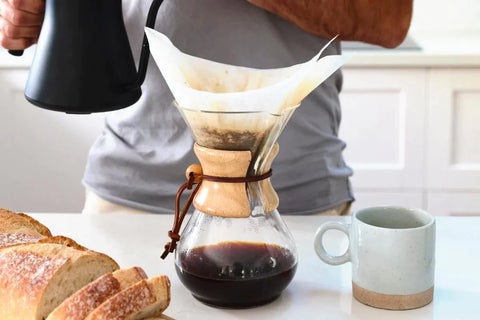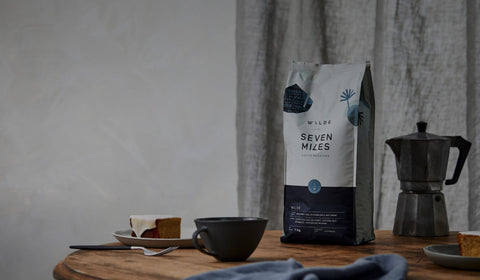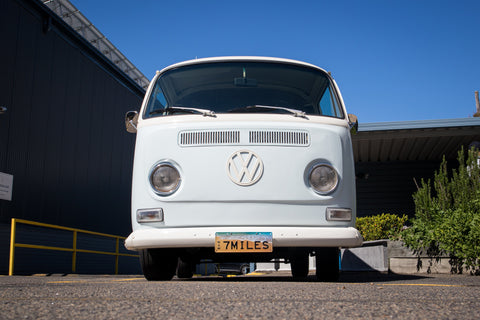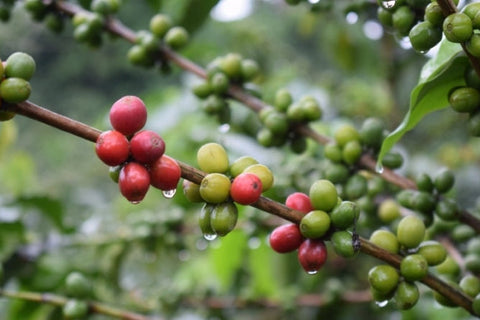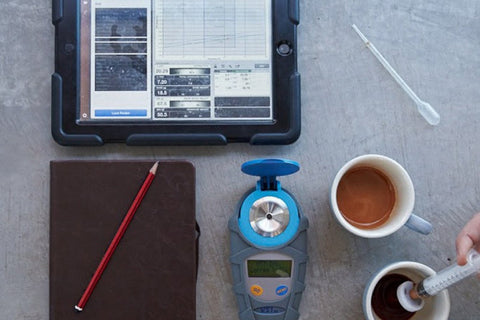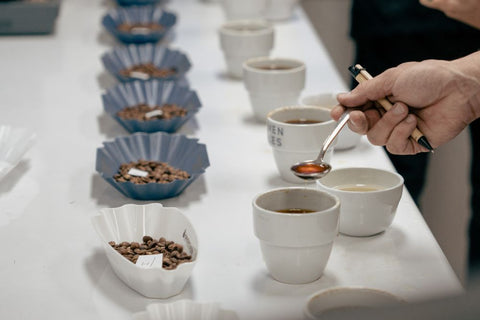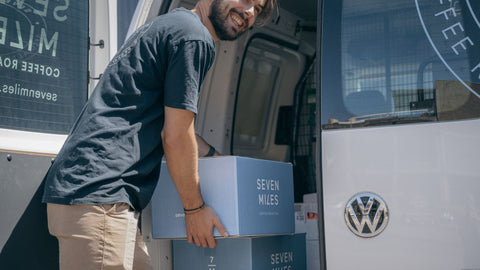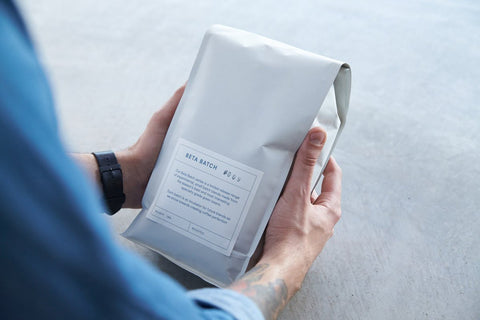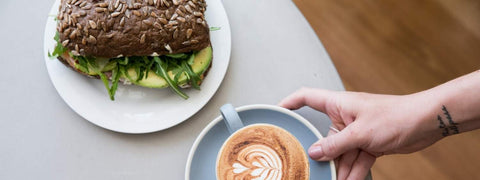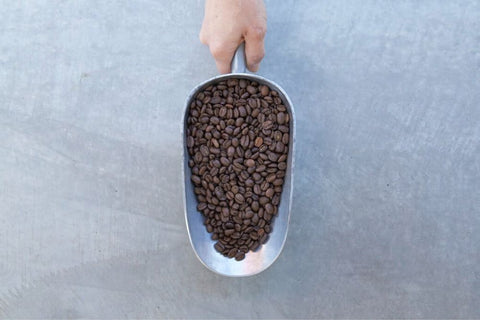The Highs
- Great tasting espresso and surprisingly consistent extractions shot-to-shot.
- Cool design, great fun to play with.
- Won’t break your jaw like the original.
The Lows
- Workplace safety a concern for busy cafes.
- Long time to practically pull a shot. A lot of user-machine interaction required.
- Concerns about flyback damage to the machine when mistakes occur. Mindfulness needed at all times to operated effectively
The Bottom Line
It is hard to imagine a café in Australia where the Leva would be practical as the main machine. However, if the ‘show’ is how you earn your dough, you’ll find it hard to say no…
Introduction: Achilles jawbone?
In 1948 Achille Gaggia produced the first commercial lever espresso machine. It revolutionized espresso, as it was the first time ‘crema’ was found atop an espresso coffee. To produce this brew, a barista had to summon his or her full strength, pull down on the lever, and catch the nectar in a cup. Enter the term ‘pulling’ a shot. The barista then had to take care on the upswing of the lever, lest it fly back and break his/her jaw. One may ask: “why revisit this delicious, if deadly design?” To answer that questions, we asked La Marzocco directly. The answer: “Because we could!” We love it. And we think this puts us in the right frame of mind to write a review on the machine. Herein we seek to answer: what sets the Leva apart from its pump-driven brethren? And who do we recommend this machine for?
How much of a difference does a spring-driven extraction profile make?
To answer the above, let’s think a bit about how this machine works. The heart of the machine is its spring. This spring provides the force necessary to drive water through the ground coffee using the coiled spring’s elastic potential energy. The force acting on the coffee declines over time according to the elastic modulus of the spring installed in the machine. To operate the machine, this spring is wound up through the lever (employing a clutch-type mechanism in the La Marzocco version). Simultaneously, a set amount of water is infused into a set volume chamber. When the clutch is released, the spring then acts on the water within this chamber, driving it through the espresso puck. The pressure is defined by how tightly this spring is wound up (and can be manually adjusted with a screw on the back of the machine). Once the extraction starts, the spring’s elastic potential energy is released, causing the pressure to drop over time This extraction profile differs from most conventional pump driven machines, where pressure is typically constant over the whole extraction.
Some would therefore define this machine as a ‘pressure profiling’ type machine, but in truth, the machine only has one pressure profile, which is defined by the spring itself.
The profile can be slightly modified by altering pre-infusion time and grind setting, but the changes would not be significantly different to what is experienced in a constant pressure machine. So, because the profile differs from a constant pressure machine, we decided to test what these differences meant in terms of taste profile and extraction mechanics. Our tests are reported here as being relative to the La Marzocco Strada AV-ABR, a constant pressure machine. We tested both machines with our Tazzina Café (a true Italian!) blend, which were roasted 7 days prior, and ground through an Anfim SPII. The recipe was 21g of coffee in the basket, 29g of espresso extracted within 40 seconds. We adjusted the grind on both to achieve this recipe before testing.
Machine Consistency
First things first, we found the pressure profile was very consistent on the Leva, for the settings tested. This made it a lot easier for our tests, but moreover, will inspire confidence if placed in cafes. We found the pressure at any given point along its profile was within 3.4% of the average of all tests conducted. That’s very good. Similarly, with consistent dosing, tamping and grind setting, extractions were all within 2 grams of each other with no other controls. Very tight. 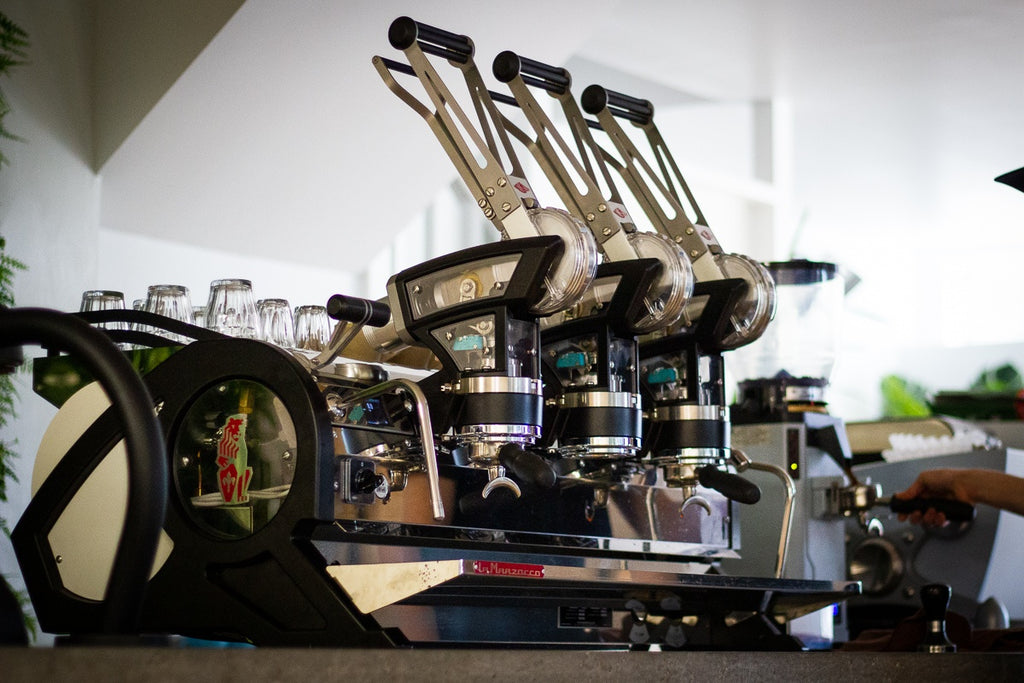
How does it Taste?
Tasting a coffee from the Leva and comparing it to a constant pressure machine (in this case, the Strada AV-ABR), one could detect how much smoother the coffee was over the traditional ‘constant pressure’ machines. The mouthfeel, done blind, certainly seemed to be superior (i.e. more ‘chewy’) than what we obtained under similar extraction conditions from the LM AV-ABR. One of the variables that could be controlled ‘on-the-fly’ on the Leva was preinfusion. However, the effect of preinfusion on taste is a little hazy. So, we tried to find a bit of clarity here. We took the flavour ‘web’ of our Tazzina coffee and looked at how it varied with pre-infusion time. In this case, we were able to pre-infuse the coffee between 0 and 12 seconds. Here we got three experienced tasters to taste a coffee against 6 categories (sweetness, intensity, aftertaste, acidity, smoothness and balance), and compare how this deviated from the ‘ideal’ recipe.
- As preinfusion time increased, the intensity of the coffee decreased.
- We found that the aftertaste was noticeable less bitter (this scored high on this coffee due to its nature as an Italian-style espresso), and for Australian tastes, improved its flavour balance as an espresso.
Some more complex behaviour was exhibited for sweetness and balance. We found that sweetness and balance had a ‘peak’ value at about 5 seconds pre-infusion time. Longer pre-infusions reduced this significantly. By the time we reached 12 seconds, balance and sweetness made the coffee much less enjoyable. So, for Tazzina Café blend, we found pre-infusion times between 5 and 6 seconds to be the most enjoyable.
Effect of the Leva on Extraction Concentrations
One of the outcomes of the results shown above is that we believe the Leva machine tends to make flavour webs more symmetrical.
This means that the lever extraction tends to ‘balance’ all aspects of the coffee together.
And we think we know why. Figure 2 shows two graphs that represent different extraction behaviour. Figure 2A shows a comparison between the mass flowrate (in grams per second) across the whole extraction in both the Leva and the Strada AV-ABR. We see that the mass flowrate over time is equivalent at the start of the extraction (where conventionally we believe a lot of the sweetness is extracted, along with many desirable flavonoids), and both machines tend to accelerate over time as solutes are dissolved, permitting faster flow of water over time. However, we find that, thanks to the spring profile, the Leva tends to accelerate at a slower pace than the constant pressure machine, which results in a more even flowrate across the pull. This reduced flowrate then has an impact on the dissolved solids across the extraction. The effect of reduced flow on the concentration of the brew is shown in Figure 2B. As flow continues through the puck over time, the concentration of coffee solids decreases. Both the Leva and the AV-ABR decreased in solids concentration over time. However, the AV-ABR decreased by a factor of three over the whole extraction, while the Leva decreased by a factor of two. So, in comparison, the Leva had a more consistent solids extraction over the whole pull.
Is the Leva suitable for real world café use?
We love it, but… There’s a lot to like about the Leva. From the enjoyable art of pulling the shot, watching the spring in action and operating the ‘cool-touch’ steam wand. It’s a beautiful piece of kit, and one that often initiates talking points about what it is, and how it works.
It’s a talking point, and that is often a great thing in a café, and one that starts the conversation flowing about the coffee itself.
However, it’s an interesting experience going from push-button operation to a machine that requires so much user-machine interaction. For the most part, it was an enjoyable experience, but several aspects of the machine hold it back from being a good choice for a busy café workhorse. Firstly, while the lever (on the Leva…) is simple and smooth to operate (and an awful lot of fun!), the height of the lever and repetitive action make it potentially prohibitive for the vertically challenged. Sure, one could employ a stool to assist in operation, but that makes it even more of a work safety issue. Secondly, while the Leva is no doubt a mechanical masterpiece, there is a steep learning curve. While purging the machine, one has to be careful not to release the clutch too far away from the reset point – or the metal mechanism will fly back and potentially damage the plastic control module. It makes a terrifying ‘snap’ sound if this occurs, which will forever plague your mind. Finally, throughput can be an issue. To pull a full espresso shot, say in 30 seconds, about 60 seconds of ‘operation time’ needs to be employed. This is largely due to the tapering nature of the pressure profile. Once the shot has completed, the portafilter remains pressurized for a significant time, which makes removing the handle an exercise in avoiding boiling splatters of water.
Who is the Leva best suited for?
Perhaps answering this question is best summarized by a quote I pulled (ha!) from the baristas in our espresso window, when asked if they’d like to install it for a day in their café:“Sure! If we only had dine-in coffees, we employed an extra person, and the customers didn’t mind waiting, and they only wanted a single shot espresso, then I’d love to put it in the café!”
I suspect the Leva would go well in a ‘coffee lounge’ type setting, where people enjoyed the theatre of manually pulling a shot, or an ‘espresso-only’ bar. In Australia, this is not the typical model. But, that’s not to say it has no use. I suspect it would be fantastic as a secondary espresso machine in a cafe for serving high quality single origins. In fact, I’d love to see a single group version that only does espresso. If this existed, I’d buy this machine in an instant. Why? It’s a conversation starter. A customer can see and appreciate what goes into the extraction of a coffee through an espresso machine, and it will do justice to almost any coffee you put through it. I’d put my single origins through it and talk about why the Leva gets the most out of the coffee’s terroir. And I think that’s a great thing for any café. The unit reviewed was the Leva X, which has an MSRP of $25,000AUD for the 2-group model and $27,600AUD for the 3-group model. The Leva is also available in an ‘S’ model, which excludes the digital display – however this version is currently only available as custom order in Australia.
